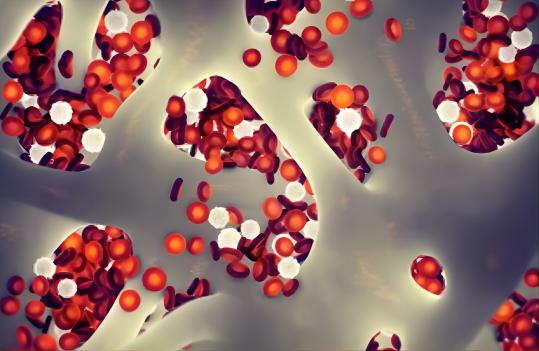Hematopoietic Stem and Progenitor Cells — What You Should Know?
Hematopoietic stem/progenitor cells (HSPCs) isolated from bone marrow have been successfully employed for 50 years in hematological transplantations. Currently, these cells are more frequently isolated from mobilized peripheral blood or umbilical cord blood. Hematopoiesis is a process that involves the production of all mature blood cells from hematopoietic stem cells (HSCs) by maintaining a fine balance between enormous production. According to widely accepted stem cell definition, HSCs possess the ability for self-renewal and may differentiate into HPCs giving rise to any blood cell type of the myeloid and lymphoid lineages.
Resources of HSPCs

-
Bone marrow (BM)
BM is the major site of hematopoiesis in humans. The BM is liquid and looks like blood. Anticoagulants are added to prevent clumping. After the marrow is collected, the cell suspension is passed through a series of sterile filters of decreasing size to remove fat, bone particles, and cellular debris. -
Peripheral blood progenitor cells (PBPCs)
PBPCs are another type of cell therapy product that contains HSPCs. The cells are collected from the peripheral blood using an apheresis device, which acts like a centrifuge to remove whole blood from the donor and separate its components. -
Umbilical cord blood (UCB)
UCB once regarded as biological waste, is another source of HSPCs. UCB can be collected safely by obstetricians or birthing staff following the delivery of the baby. The unit then undergoes further processing (primarily to remove red blood cells) and cryopreservation (freezing) and is stored in a liquid nitrogen freezer for potential use at a later time.
Markers of HSPCs
-
Markers of HSCs
Sometimes it is necessary to use several markers/parameters in combination. The table shows the most important cell surface expression antigens and metabolic fluorophores, which are useful for the identification and possible isolation of hematopoietic stem cells. However, there are some differences between markers for murine and human hematopoietic stem cells.
| HSC | Mouse | Human |
|---|---|---|
| Hemangioblast (yolk sac) | Flk-1 (Kdr)+ | ? |
| Pre-HSC (AGM) | CD34+ CD41+ Sca-1- CD45- | ? |
| HSC (AGM, placenta) | CD34+ CD41+/- Sca-1+/- CD45+ | CD34+ |
| HSC (fetal liver) | Sca-1+ CD34+ CD45+ Mac1+ CXCR4+ | CD34+ CD133+ CXCR4+ Lin- |
|
HSC Long-term engrafting HSC (LT-HSC) Short-term engrafting HSC (ST-HSC) (bone marrow) |
CD34- CD38- Sca-1+ Thy1.1+/lo c-kit+ lin-
CD135- Slamf1/CD150+ CD34+ CD38+ Sca-1+ Thy1.1+/lo c-kit+ lin- CD135- Slamf1/CD150+ Mac-1 (CD11b) lo |
CD34+ CD59+ Thy1/CD90+ CD38lo/- c-kit/CD117+ lin- |
- Markers of HPCs
This table shows the markers that can identify and isolate hematopoietic progenitor cells.
| Mouse | Human | |
|---|---|---|
| HPC | Early: CD34+, SCA-1+, Thy1.1-, c-kit+, lin-, CD135+, Slamf1/CD150-, Mac-1 (CD11b) lo, and CD4lo | CD150-CD48-CD244+ (MPP), CD150-CD48+CD244+ (LRP), lin-Sca-1-c-kit+CD34+CD16/32mid (CMP), lin-Sca-1-c-kit+CD34+CD16/32hi (GMP), lin-sca-1-c-kit+CD34-CD16/32low (MEP) |
| Late: CD34+, SCA-1+, Thy1.1-, c-kit+, lin-, CD135high, Slamf1/CD150-, Mac-1 (CD11b) lo, and CD4lo |
HPSCs Culture & Expansion
-
HPSCs culture
Hematopoietic cells can be stimulated to proliferate in culture using many different methods. The composition and biological properties of the cells that are produced using these different culture systems will differ considerably depending on the diverse applications for which they are intended to be used.
Large numbers of basal media are accessible to culture stem cells. The quality as well as quantity of the serum used in stem cell culture media play a significant role and affect the outputs. Moreover, growth and differentiation factors also regulate survival and self-renewal along with proliferation and differentiation. -
HPSCs expansion
A substantial amount of hematopoietic stem cells is imperative for both stem cell research as well as for therapeutics and can be acquired through in vitro stem cell expansion which is a long-term culture of HSCs without their exhaustion or differentiation which may happen during HSC culturing. Appropriate culture conditions and expansion media with necessary supplements are prerequisites for this process of continuous maintenance of HSC's features and CD markers.
Creative Bioarray Relevant Recommendations
We provide hematopoietic stem cells and culture media in the table below to support our clients' research. These products are for research use only.
| Product Types | Details |
|---|---|
| Hematopoietic Stem Cells | Human Hematopoietic Stem Cells, Human Embryonic Hematopoietic Stem Cells -XLC501, Human CD34+Hematopoietic Stem Cells, Rat Embryonic Hematopoietic Stem Cells, Mouse Embryonic Hematopoietic Stem Cell-XLC471 |
| Hematopoietic Stem Cell Media | Human Hematopoietic Stem Cell Growth Medium, Rat Embryonic Hematopoietic Stem Cell Media |

Your email address will not be published. Required fields are marked *